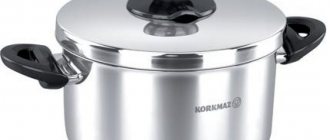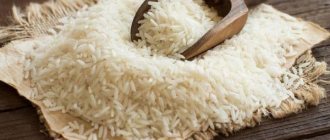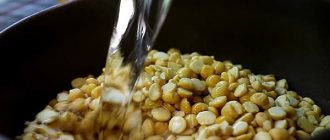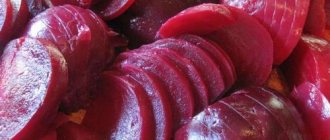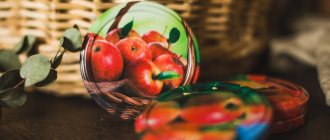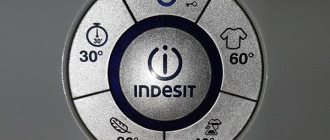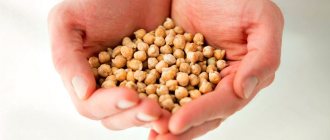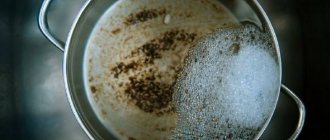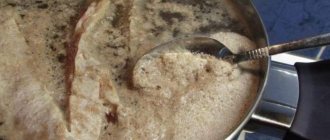Porridge is one of the most important dishes on our table. We eat it for breakfast to get a long-lasting boost of energy and a portion of important B vitamins necessary for the quality functioning of the nervous system and brain. We eat porridge as a side dish for lunch or dinner. There are a lot of benefits in one serving - complex carbohydrates, vitamins and minerals. Porridge takes a long time to be processed into glucose, longer than pasta or potatoes, so one serving will not cause spikes in blood sugar levels. AiF-Kitchen decided to talk about the most common mistakes we make when choosing or preparing porridge.
Choose instant porridge
Strictly speaking, this is not entirely a mistake. Unless, of course, you are prepared for the fact that you will end up with only bare calories, without any vitamins and microelements. Moreover, such cereals will turn into glucose at about the speed of white bread - that is, very quickly. The fact is that fast-cooking cereal flakes and steamed porridges have already been cooked once. Then they dried it in a special, quick way. There are practically no useful substances left in them. The latter will leave when you are already cooking.
Article on the topic Not only vitamins. Why is oatmeal dangerous and which rice is healthier?
Why do you need to sort cereals?
Some types of cereals should be sorted out in order to remove pebbles from them. This is especially true for various pebbles and other solid inclusions.
If it is fine grain, then, as a rule, it is not worth sorting through it. Just inspect the surface and if there are any specks, remove them.
Washing some types of cereals is also necessary in order to remove phytic acid. Thanks to this, the porridge will be much better absorbed by your body. After all, this acid interferes with the normal absorption of phosphorus, zinc, magnesium, and other substances.
Author: Veronika Golasovskaya
Disturb the proportions
If you want to get crumbly porridge, the proportion is 1 part cereal to 2 parts water. This applies to everything except rice. It requires 1.5 parts of water. Adding more water and opening the lid to let it evaporate results in a watery, tasteless mess.
Spelled porridge and eggs Benedict. Recipes for a leisurely weekend breakfast Read more
What grains need to be washed?
To prepare a tasty and rich porridge, you need to rinse almost all the cereals. If the grains are hard, then they must be rinsed with water. Although many manufacturers use modern packaging methods that meet all hygienic standards, it is still best to play it safe.
Photo: Pixabay
The grains must be washed to get rid of dust, husks and other impurities. Thanks to this, after cooking the dish will look very aesthetically pleasing.
Before cooking, it is necessary to wash buckwheat, rice, millet, pearl barley, as well as various types of legumes.
These cereals need to be washed under running water. It is advisable to do this several times to thoroughly wash everything.
Millet porridge with poached egg
Photo: Press service of the cafe-bakery “Khlebnaya Lavka”
Recipe by Mikhail Simagin, chef of the cafe-bakery “Khlebnaya Lavka”
- 50 g millet cereal
- 200 ml water
- 150 ml milk
Article on the topicHealthy porridge. 25 cereal recipes
- Salt and sugar
- 25 g parmesan cheese
- 15 g cheddar cheese
- 1 egg
Step 1. Boil millet in water until half cooked, add milk, salt, sugar to taste
Step 2. Add grated cheddar, stir until the cheese disappears completely, place on a plate, sprinkle with grated Parmesan
Step 3. Prepare a poached egg: salt the water, without bringing it to a boil (about 80 degrees), break the egg. Cook for 2-3 minutes
Step 4. Place on the porridge and garnish with a basil leaf.
What about green buckwheat?
We should also talk about green buckwheat. This is a fairly popular product among those who adhere to a healthy diet.
It also must be washed in water until it becomes clear. And after that, it is advisable to soak it in clean boiled water for 2-3 hours. This procedure is necessary for green buckwheat to germinate: only in this case will the product really be useful.
Rinse it, soak it and rinse it again to remove any mucus that has formed (Photo: depositphotos.com)
But even after soaking, do not forget to rinse the cereal: due to prolonged exposure to water, unpleasant mucus may form on the product, which definitely should not be eaten.
At the last stage, the liquid is drained, the cereal is laid out on a clean surface and left for a day. And only when the product is completely dry can buckwheat be processed.
Perlotto
Photo: Shutterstock.com
Recipe by chef Denis Malansky
- 70 g pearl barley
- 50 ml dry white wine
- 150 g tomatoes in their own juice
- 1 tooth garlic
- 30 g shallots
- 40 g hard cheese
- 40 ml olive oil
- Fresh thyme
- 50 ml heavy cream
- Salt and pepper
For decoration: radish sprouts and basil leaves
Article on the topic
Scrambled eggs versus porridge. What's best to eat for breakfast?
For the broth:
- 1.5 liters of water
- 200 g duck breast
- 100 g carrots
- 50 g leek
- 100 g celery stalk
- Fresh thyme
- Salt and pepper
Step 1. Prepare the broth. Place duck breast, randomly chopped carrots, leeks, celery into cold water
Step 2. Cook a little, add thyme. Cook for 1.5-2 hours over low heat, add salt and pepper, strain
Step 2. Finely chop the garlic and shallots
Step 3. Prepare the perlotto. Rinse and dry the pearl barley. Then fry with garlic, shallots and thyme in olive oil for 3-5 minutes
Step 4. Pour in the wine and, stirring, wait for it to evaporate
Step 5. Add 200 ml of finished broth, waiting for it to evaporate
Step 6. Add tomatoes in their own juice, cut into small cubes, and their juice. Simmer for 2-3 minutes
Step 7. Add cream, grated cheese, salt and pepper to taste
Step 8. Bring, stirring, to a thick consistency for 3 minutes.
Step 9. Serve perlotto with duck breast, garnished with radish sprouts and basil leaves.
Do I need to wash buckwheat before using it?
Most often, buckwheat is purchased packaged in transparent cellophane bags. This packaging weighs 800-900 g and allows you to visually determine the quality and contamination of the product. Before cooking, this cereal must be washed several times with cold water.
Why rinse?
You should not completely rely on the manufacturer, even if its products are of high quality. Even in expensive packages you can also find garbage of various origins and low-quality grains.
Not only the health of the digestive tract depends on washing, but also the taste, which is significantly different from the taste of porridge made from unwashed buckwheat. This is easy to check: cook in two versions and try to make sure.
Even cereals intended for baby food may contain various contaminants. In the highest grade buckwheat, the permissible value of impurities is 0.3%, in the third grade - 2 times more. To eliminate them, careful processing is required.
Important! Any variety of buckwheat is washed, regardless of cost.
There is another reason why products are washed before cooking - this is to remove phytic acid, which prevents the body from absorbing nutrients: phosphorus, zinc, potassium, magnesium and other minerals. Buckwheat will be less healthy if it is not rinsed before cooking.
Where does the garbage come from?
In loose cereals and packaged cereals there is small debris:
- Broken grains, small particles that do not pass through the sieve in production. Such impurities are not harmful to health, but the cooked porridge will have a viscous consistency.
- Kernels in the fruit shell. Poorly processed cereals can significantly spoil the taste of the finished dish.
- Pebbles, pieces of ore, sand, slag, small earthen lumps, potentially dangerous to the body. Biting on a small stone while eating can injure a tooth. This type of debris enters during the collection of grains mechanically - it is possible to capture soil particles.
- Organic litter - husks from grains, particles of buckwheat stems and other nearby crops (also found during harvesting).
- Black grains of dodder are a weed plant that is found in buckwheat fields.
Cereals, especially loose cereals, must not only be washed, but also carefully sorted by hand.
Spelled porridge with parsnips
Photo: Remy Kitchen Bakery Restaurant
Recipe by Ruslan Polyakov, chef of the Remy Kitchen Bakery restaurant
- 200 g spelled
- 80 ml milk
- 50 ml cream 11%
- 50 g parsnips
- Salt and sugar to taste
Step 1. Boil the spelled until tender
Step 2. Peel the parsnips and cook until tender (until soft)
Step 3. Then prepare the parsnip puree: mash the finished parsnips with a fork.
Step 4. Place parsnips in a pan with prepared spelled and pour 11% cream and milk
Step 5. Cook until thick. Add salt and sugar to taste. Serve with poppy seed jam.
Rice and buckwheat before cooking: why you need to rinse
Regardless of the manufacturer, grain crops are stored in barns and granaries until they reach store windows. Very often, employees of such premises treat surfaces with disinfecting solutions and mixtures to prevent the spread of pests. It is unlikely that you would want to consume such a product without first processing it.
Washing is a mandatory procedure
Even if you don't take phytic acid into account, it's worth at least removing the debris. For this purpose, many housewives carry out manual processing, sorting the grains with their hands. However, such methods are increasingly becoming a thing of the past.
Today, cereals are poured into a pan and the container is placed under running water. Grains of sand and small debris are much lighter than the grains themselves. The grain swells from the penetration of moisture, becomes even heavier and sinks to the bottom of the pan. Garbage and low-quality grain rise to the surface, being removed under the influence of water.
Washing should be done repeatedly, there is no exact number of repetitions of the procedure
It all depends on the quality of the raw materials. But the main factor indicating the completion of processing is crystal clear water without impurities.
As an additional option, it is recommended to wash the buckwheat through a metal sieve to completely eliminate the possibility of sand grains getting in. It is possible to partially sort through the grains by hand during washing, but care is required: if small debris is damaged, it will break up into several parts and completely remove it will be problematic. You can begin heat treatment of the product only after all manipulations have been completed.
There are exceptions: purchasing buckwheat in portioned bags for cooking completely eliminates additional washing and processing. Trusted manufacturers carry out all necessary procedures at the product packaging stage.
Special attention should be paid to washing green buckwheat
The procedure also needs to be repeated several times until clear water is obtained at the end of the process. According to the recommendations of experienced housewives, this type of buckwheat needs to be soaked for several hours in chilled boiled water.
Such actions are necessary for the germination of grains: only in this form does green buckwheat contain the maximum amount of nutrients.
After finishing soaking, the cereal needs additional washing. After a long stay of the grains in an aqueous environment, they swell and mucus forms on the surface. It is necessary to rinse green buckwheat until you are completely sure that this mucus is absent.
At the final stage of processing, the cereal is evenly distributed over a flat surface, leaving to dry for about a day. Heat treatment is possible only after the grains have completely dried.
Washing is necessary
GOST R 55290-2012 is responsible for the quality of buckwheat. According to this standard, the presence of split kernels, flour, unpeeled grains, and organic litter (particles of stems, husks) is allowed in the product. In small quantities, according to GOST, cereals may also contain mineral debris - grains of sand, slag, particles of earth. It is clear that manufacturers who care about their reputation install special devices on the lines that allow them to get rid of unwanted inclusions, but even these measures do not allow them to completely remove blockages.
Rinsing buckwheat will allow you to wash away the smallest impurities from the surface of the kernels, as well as remove grains of sand and particles of earth, which are absolutely not needed in the finished dish.
Recently, a lot of materials have appeared on the Internet about phytic acid, which is found in cereals and does not allow the body to absorb potassium, zinc and many other trace elements. Of course, simple washing will not neutralize it, but soaking in slightly acidified water for 4-5 hours is enough. A simple manipulation will not only increase the benefits of the porridge, but will also almost double the cooking time.
Dishes from “yesterday’s porridge”
Any porridge left over from yesterday can be used the next day in completely different dishes: pancakes, pancakes, krupeniki, vegetarian (or not) cutlets and meatballs.
In meat cutlets and meatballs, cereal can act as an additive in the role of bread. And in vegetarian ones - as a base to which you can add vegetables, say, finely chopped and fried onions and carrots, grated zucchini/zucchini, pumpkin, stewed cabbage... For some types of cereals: millet, starchy rice, green buckwheat - you don’t even need an egg , you can only crush a little starch. Well, and all kinds of spices: cumin, curry, coriander, hops-suneli, paprika - or whatever the recipe requires. Arborio rice is used to make a classic Italian dish - arancini meatballs, often stuffed with cheese, rolled in breadcrumbs and deep-fried until beautifully golden brown.
Porridge pancakes are usually made with yeast, and they can easily be lean (vegan), without milk and eggs - viscous porridge with the addition of flour holds its shape perfectly in a frying pan. The most popular cereal plini are millet, although you can use rice and oats. It is better to make pancakes from buckwheat and different types of wheat with the addition of eggs, flour and baking powder - so that they are richer. You can use ready-made cereals to add satiety to vegetable pancakes - for example, zucchini or carrot.
Crumbly grains - not just rice - can be fried in a wok or large frying pan along with finely chopped vegetables (regular or green onions, garlic, ginger, carrots, stalked celery, cubes of zucchini, eggplant, sweet peppers), and add raw eggs towards the end . You can beat them a little or crack them directly into the hot grits and stir vigorously, keeping the pan over high heat to set the eggs. Or you can use leftover baked meat/poultry or bacon rather than eggs.
Grechaniki are made from boiled buckwheat (they are also grechniks or even sinners) - they mix it with flour and sometimes eggs and fry it in oil or bake it, and then cut it. With sinners, instead of bread, it is very tasty to eat cabbage soup or borscht.
Well, and various kinds of cereals - a mixture of yesterday's porridge with cottage cheese, beaten eggs, sugar or honey, dried fruits or apples and pears (or unsweetened, with herbs and grated hard cheese) - an excellent breakfast or dinner. It is best to bake this mixture in a rectangular cake pan, greased with butter and sprinkled with breadcrumbs at a not very high temperature - 160–170 °C, for 30–40 minutes. Eating krupeniki tastes better lukewarm or completely cooled.
Casserole from yesterday's porridge
Where does the garbage come from in buckwheat?
The quality of buckwheat is determined by GOST R 55290-2012. According to the standard, cereals are sold in the form of steamed or unsteamed buckwheat kernels (whole grains) and podel (cracked buckwheat kernels). The product is valued for its absence of pesticides and genetic modification, but the kernels require additional purification.
According to established standards, finished packaged cereals may contain:
- Broken kernels, flour. These are small particles that do not pass through a woven sieve No. 08 (8 holes per 1 cm 2). Such impurities will not harm your health, but with them the finished porridge will be viscous.
- Grains in a fruit shell. They remain hard for a long time and spoil the consistency of the dish.
- Particles of sand, ore, small earth lumps, slag.
- Litter of organic origin: buckwheat husks, particles of cereal stems and other nearby plants.
- Poor quality kernels. This includes rotten, moldy seeds in the package.
All cereals, especially loose cereals, must be carefully inspected. It may contain black grains of a weed plant - hop ford. They must be removed manually.
Even cereals intended for baby food may contain the listed types of contaminants. Exceptions are admixtures of third-party and spoiled grains.
In premium buckwheat, the permissible value of impurities is 0.3%; There are 3 varieties in the cereal - 2 times more. To eliminate them, buckwheat must be thoroughly washed.
Instructions for preparing buckwheat
Before cooking, it is sorted to remove large debris and stones. For this:
- They collect the grains in a glass so that they know how much to cook and pour them onto the table.
- Separate small handfuls from the total mass with the palm of your hand and distribute them in a thin layer on the countertop - this way you can better see the fine debris.
- Unprocessed and empty grains, as well as foreign impurities, are removed.
- The cleaned grains are swept off the table into a container in which the buckwheat will be cooked.
It is also convenient to inspect the grains in a shallow pan of large diameter, distributing them evenly along the bottom.
What do the manufacturers say?
I specifically asked myself this question and spent a lot of time in the supermarket studying the manufacturers' recommendations. Only a quarter of the packages contain instructions about the need to rinse the cereal before starting cooking. Meanwhile, even visually in packs where this information is not available, it is noticeable that buckwheat is in dire need of this procedure.
In any case, the cereal will not be perfectly clean, so you should not neglect washing it. A simple and short procedure will allow you to get rid of husks and grains of sand, as well as wash away harmful substances from the surface of the cereal.


